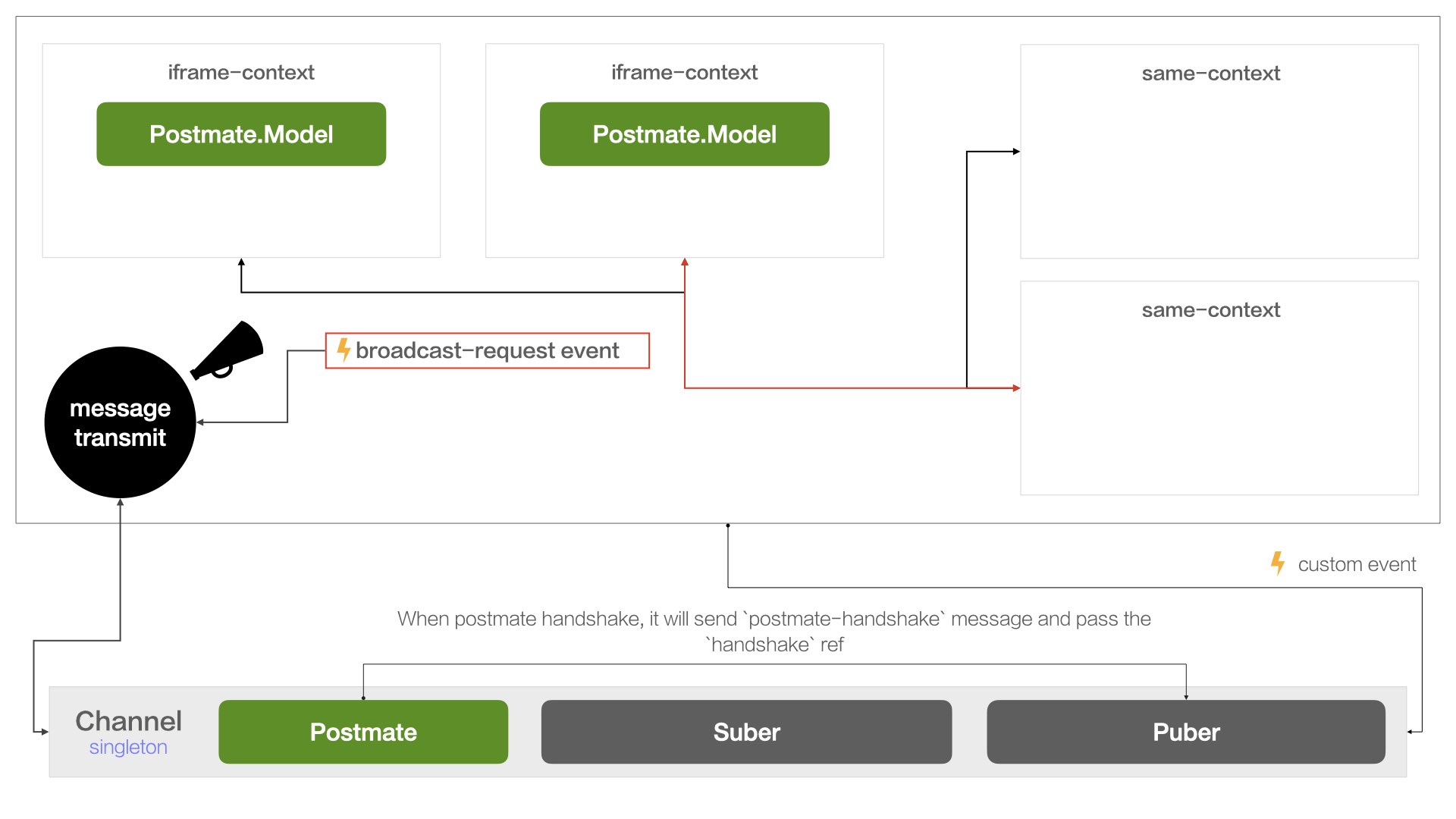Isomorphic channel for Micro Frontends.
In large web applications, we often load pages in different execution contexts. To solve historical technical debt problems, sometimes we choose not to be radical, but to choose more rapid integration. So many solutions are emerging in the community, such as what are called Micro Frontends, which are most popular. However, we still believe that the most perfect sandbox isolation scheme in the browser environment is iframe, so we choose to let them coexist with self-built sandboxes, at this time we need a developer-friendly communication solution, this is what isomorphic-channel does.
- 🤝 Support
Cross-Contextcommunications. - 📢 Support
broadcast-mode. - 🚀 Support handler binding to
iframe, No Restrictions(structured clone).
step 1: install
$ npm install @atools/isomorphic-channelIf you need
broadcast-mode, must callsetupfirst.
import { channel } from '@atools/isomorphic-channel';
channel.setup()Listen from
channel, return acancellation
import { channel } from '@atools/isomorphic-channel';
const remove = channel.on('iframe-broadcast', (payload) => {
alert(`in qiankun: ${JSON.stringify(payload)}`)
// remove listener
remove()
})To break the
structured clone algorithmlimitation, we providecb.autoRun, you need to use it to wrap your handler.
import { channel, cb } from '@atools/isomorphic-channel';
// The magic of cb.autoRun
// 1. It will break the limitation of [structured clone algorithm].
// 2. Transform handler to current context.
channel.on('qiankun-broadcast', cb.autoRun((payload) => {
alert(`in iframe: ${JSON.stringify(payload)}`)
}))Broadcast to
channel
import { channel } from '@atools/isomorphic-channel';
setTimeout(() => {
channel.broadcast('qiankun-broadcast', { key: 'hello, I am qianku.' })
}, 5000)Send to
channel, withoutbroadcast-mode
import { channel } from '@atools/isomorphic-channel';
channel.send(message, payload);import { channel } from '@atools/isomorphic-channel';
channel.debug();const disconnect = channel.handshake({
container: DOM_NODE,
url: IFRAME_URL,
name: NAME, // required
classListArray: [], // your own classList
});
// disconnect
disconnect();